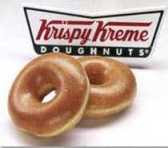One of the benefits of being a writer is that I am always on the receiving end of humorous and informative stories reported to me by the people I meet.
Last week I heard one of the best yet. A friend of a friend was recounting a recent Fourth of July meal with his family. His grandmother, a spry 93-year old, picked up a small box of bang snaps— the small firecrackers that are wrapped in paper and explode when thrown on the ground— and popped a few of the firecrackers into her mouth thinking that they were candy.
 I am not sure if they exploded when she bit down on them or not, but the young man recalling the story told of a puzzled look on her face as smoke drifted out of her mouth while sitting at the dinner table. Luckily, she wasn’t harmed and apparently laughed it off. Others in attendance were witness to a story that will certainly be told, retold, and added to the file of ancestral remembrances that are recounted every time the family gets together, and certainly every Fourth of July.
I am not sure if they exploded when she bit down on them or not, but the young man recalling the story told of a puzzled look on her face as smoke drifted out of her mouth while sitting at the dinner table. Luckily, she wasn’t harmed and apparently laughed it off. Others in attendance were witness to a story that will certainly be told, retold, and added to the file of ancestral remembrances that are recounted every time the family gets together, and certainly every Fourth of July.The story reminded me of my brother’s wedding, 28 years ago this month. At the time, the practice of throwing rice at weddings was beginning to go out of style. Apparently the wedding rice was being eaten by birds creating intestinal problems. This was the first wedding I attended that offered bird seed to throw at the bride and groom as they made their escape.
The wedding reception was held at the bride’s home. Small bowls of bird seed were placed around the front door so guests could grab a handful when the newlyweds made their exit. At one point during the reception, I rounded a corner to find my grandmother, a very prim and
 proper Southern lady, popping handfuls of bird seed into her mouth. Well into her eighties at the time, and possessing all of her teeth, she smiled politely as she crunched and chomped the bird seed. When I told her that bowls were not filled with nut-like hors d’oeuvres for eating, but a rice substitute to hurl at the newlyweds, she looked confused and relieved all at once.
proper Southern lady, popping handfuls of bird seed into her mouth. Well into her eighties at the time, and possessing all of her teeth, she smiled politely as she crunched and chomped the bird seed. When I told her that bowls were not filled with nut-like hors d’oeuvres for eating, but a rice substitute to hurl at the newlyweds, she looked confused and relieved all at once.I could tell that she had been wondering why the people in that town ate such strange food. Minutes later, I found my uncle doing the same thing.
Families are full of these stories. They happen all of the time, most of the time when a group is gathered together and sharing food and/or drink. Through the years, we relive them often.
One Christmas Eve, my inebriated septuagenarian aunt did the jitterbug on my mother’s coffee table. It embarrassed all of the grown-ups in the family, but we kids have been repeating the story ever since.
 As a child, my wife tried to reheat pizza in a pop-up toaster, which, as a story, is not quite as popular as the time she put her entire hand in the toaster. Her father reminds us of these childhood blunders often, and we remind him of the tamale surprise he once cooked for a Thanksgiving meal.
As a child, my wife tried to reheat pizza in a pop-up toaster, which, as a story, is not quite as popular as the time she put her entire hand in the toaster. Her father reminds us of these childhood blunders often, and we remind him of the tamale surprise he once cooked for a Thanksgiving meal.Fortunately, these types of family-food legends are being told less and less through the years. Not because people have tired0 of telling them, but as my children grow older, they create stories with each passing day. Stories that we will certainly tell and retell embarrassing them often, especially in front of company as our parents did before us, and their parents did before them.
What have we learned today?
1.) Be careful what you do at family gatherings unless you want your foibles to be relived and retold ad infinitum.
2.) Throwing rice at weddings is for the birds.
3.) Old people will put almost anything into their mouths
4.) Fireworks and grandparents don’t mix.

Apricot Casserole
3 16-ounce cans apricot halves, lightly drained
1 cup light brown sugar
1 stick unsalted butter, cut into pats
1 1/2 sleeves Ritz crackers, crushed into small pieces almost to crumb state
Preheat oven to 350 degrees.
Grease a 2 1/2-quart casserole dish. Using a bowl, crush the apricot halves between your fingers. Add the brown sugar and Ritz crackers and mix well. Pour mixture into the casserole dish and dot with the butter pats. Serve as a side item to accompany an entrée, just as you would a vegetable like asparagus or broccoli.
Yield: 8–10 servings

















